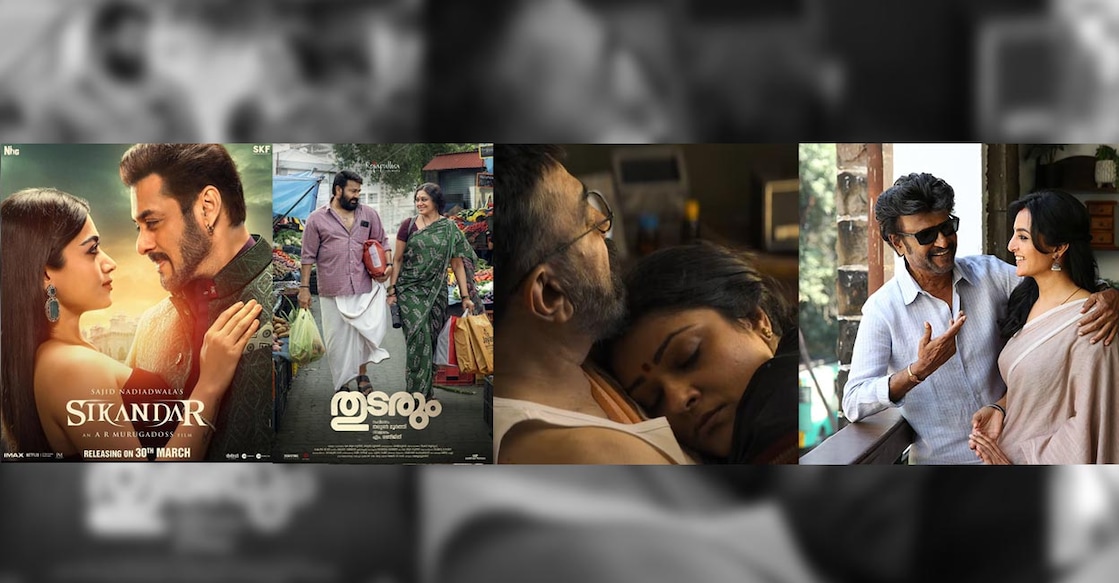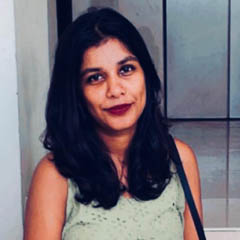Is Kamal Haasan's on-screen romance in 'Thug Life' really problematic?

Mail This Article
One blink and you miss it; Kamal Haasan's hurried liplock with Abhirami and a fleeting scene where he draws close to Trisha with a whispery utterance of love, in the trailer of 'Thug Life'. For all the splashy cuts that make for a trailer of a staple crowd pleaser, scenes which last barely a few seconds in a two-minute clip have stirred a wave of debate. How proper is the on-screen romance between Kamal and Trisha or Abhirami, who are much younger than he is?
While many criticised the significant age difference, others defended the scenes, arguing that if the script calls for such relationships, the actors should be free to portray them regardless of their age.
Film critic A. Chandrasekhar feels it's the director, not the actor, who should give answers. “In the case of ‘Thug Life’, the question of why a 70-year-old Kamal Haasan is romancing someone decades younger shouldn’t be directed at Kamal himself but at Mani Ratnam, the director. It is the director’s confidence in the actor that leads to such casting choices," he says.
Chandrasekhar also points out that Abhirami acted opposite Kamal Haasan before in ‘Virumaandi’, where the age gap was similar but did not cause controversy. “There is no rule that an actor must retire from certain roles just because they have aged.”
He further cites examples from Indian cinema to illustrate the norm of wide age gaps in casting. Salman Khan’s ‘Sikandar’, where the 59-year-old actor was paired opposite 29-year-old Rashmika Mandanna, is one such example. Mammootty played Mohanlal’s father in ‘Padayottam’ despite a smaller actual age difference. Likewise, in ‘Prince and Family’, Bindu Panicker portrayed Dileep’s mother despite them being the same age, and Kaviyoor Ponnamma played mother to the much older actor Sathyan. “If these casting choices were accepted, why is the ‘Thug Life’ casting under so much scrutiny?” Chandrasekhar asks.
On whether intimate scenes like the kiss in ‘Thug Life’ could have been avoided given the age gap, Chandrasekhar is firm: “Some actors cannot be replaced because of their unique talent and presence. Kamal Haasan belongs to that category, so the role probably warranted his casting.”
This conversation is not limited to Kamal Haasan. When Grace Antony was cast opposite Mammootty in ‘Rorschach’, a similar debate occurred, underscoring that some actors carry a weight that makes them irreplaceable, regardless of age differences with their co-stars. Mohanlal, too, has had numerous younger heroines across his career without similar controversy.
However, the times have changed. Casting choices that once went unquestioned are now being scrutinised more critically. While some audiences accept such pairings as part of cinematic storytelling, others find them problematic. There is no one-size-fits-all rule in casting; it remains the director’s vision and the audience’s suspension of disbelief that ultimately determine success.
“Cinema is make-believe. How directors cast actors is their creative choice. If the portrayal is believable, it works. Ten years ago, a wide age gap might have been outright rejected. But now, older actresses who previously acted alongside these actors decades ago, like Shobana opposite Mohanlal in ‘Thudarum’, are returning to share the screen. Casting and acting are evolving," says Chandrasekhar.
Screenwriter Deedi Damodaran adds a critical perspective. “Questions about whether a 70-year-old and a 41-year-old should act together stem from ageist thinking. Cinema has a ‘phallocentric’ tradition where male protagonists are expected to appear youthful. It’s problematic to say an older actor cannot play a younger role if the script demands it.”
Deedi emphasises the real concern lies in casting very young, inexperienced actresses opposite much older men, which often perpetuates stereotypes that young women are naive and lack agency, an unhealthy dynamic that filmmakers should move away from.
She observes that the industry is slowly changing, with actresses like Trisha and Nayanthara becoming leading figures commanding respect and influence, marking a shift away from such problematic patterns.
Discussing gender expectations, Deedi points out, “Male actors are expected to maintain a ‘youthful male’ image, which drives casting decisions. There is no equivalent pressure on actresses in terms of youthfulness, which is why many heroines reduce their film roles after marriage due to the loss of perceived ‘desirability’. This commodification of heroines does not apply equally to heroes.”
In the film 'The Reader', Kate Winslet’s romantic scenes with a teenage boy caused quite a stir. It shows how differently people react to on-screen relationships depending on the ages and genders involved.
Ultimately, Deedi argues that if the content demands a hero of a certain age, there is nothing wrong with the actor playing the role at their real age. "Look at ‘The Bridges of Madison County’, where Clint Eastwood and Meryl Streep portrayed a mature love story. Eastwood was considered ‘over the hill’ by some but proved the contrary. Similarly, a 70-year-old actor performing a liplock scene should not be controversial. Age is not a limitation in acting," she says.
“The real issue is the double standard where male actors continue their careers in varied roles while actresses face rigid judgments about their ‘marketability’ post a certain age or marital status. This imbalance reflects deeper cultural attitudes rather than any inherent problem with casting older actors opposite younger actresses," she points out.


